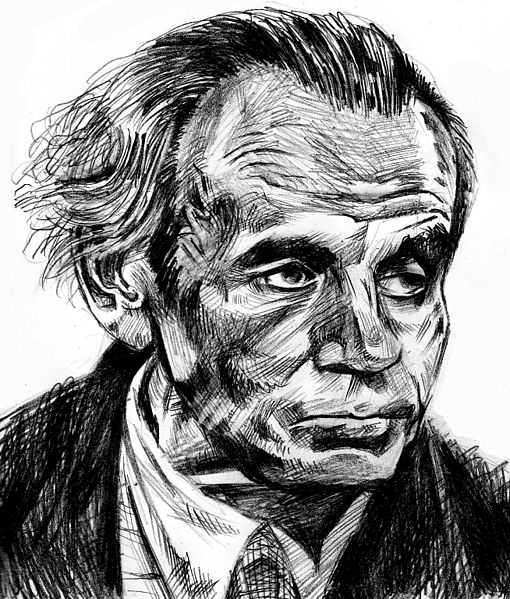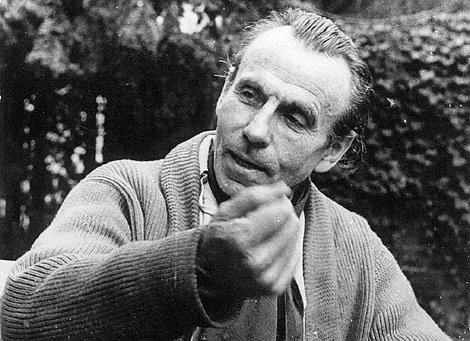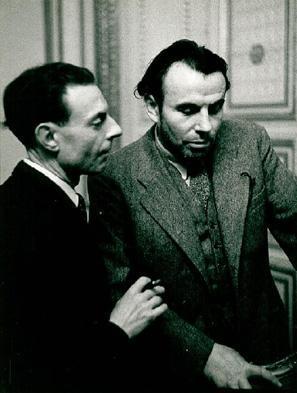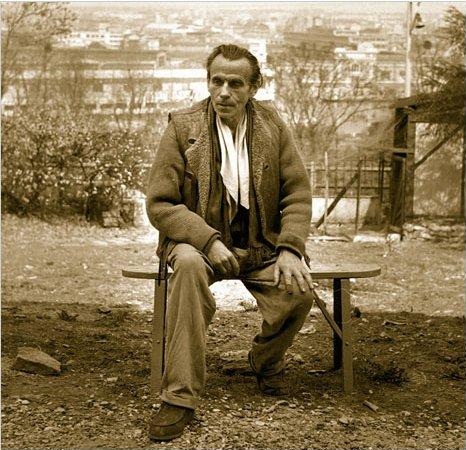<Back to Index>
- Mathematician Herbert Karl Johannes Seifert, 1907
- Writer Louis Ferdinand Céline (Destouches), 1894
- Prime Minister of Japan Yasuhiro Nakasone, 1918
PAGE SPONSOR
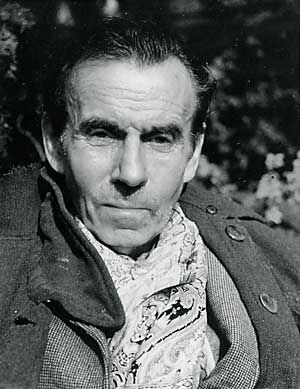
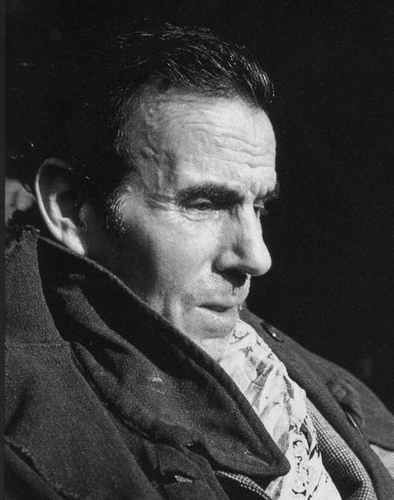
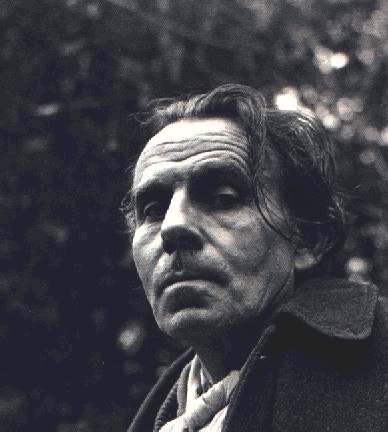
Louis - Ferdinand Céline was the pen name of French writer and physician Louis - Ferdinand Destouches (27 May 1894 – 1 July 1961). Céline was chosen after his grandmother's first name. He is considered one of the most influential writers of the twentieth century, developing a new style of writing that modernized both French and world literature. He remains, however, a controversial figure because of his anti - Semitic pamphlets.
The only child of Ferdinand - Auguste Destouches and Marguerite - Louise - Céline Guilloux, he was born Louis - Ferdinand - Auguste Destouches in 1894 at Courbevoie, just outside Paris in the Seine département (now Hauts - de - Seine). His father was a minor functionary in an insurance firm and his mother was a lacemaker. During 1905 he was awarded his Certificat d'études, after which he began working as an apprentice and messenger boy in various trades. Between 1908 and 1910 his parents sent him to Germany and England for a year in each country in order to acquire foreign languages for future employment. From the time he left school, until the age of eighteen, Céline worked various jobs, leaving or losing them after only short periods of time. He often found himself working for jewellers, first, at eleven, as an errand boy, and later as a salesperson for a local goldsmith. Although he was no longer being formally educated, he bought schoolbooks with the money he earned, and studied by himself. It was around this time that Céline started to want to become a doctor.
In 1912, in what Céline described as an act of rebellion against his parents, he joined the French army, two years before the start of the first World War and its mandatory French conscription. This was a time in France when, following the Moroccan crisis of 1911, nationalism reached "fever pitch" – a period one historian described as "The Hegemony of Patriotism" (1911 – 1914), particularly affecting opinion in the lycées and grandes écoles of Paris.
In 1912, Céline began a three - year enlistment in the 12th Cavalry Regiment stationed in Rambouillet. At first, he was unhappy with the military, and even considered deserting. However, he adapted, and eventually rose to the rank of Sergeant. The beginning of the First World War brought action to Céline's unit. On October 25, 1914, Céline volunteered to deliver a message, when others were reluctant to do so because of heavy German fire. Near Ypres, during his attempt to deliver the message, he was wounded in his right arm. (He was not wounded in the head, contrary to a popular rumor that Céline, himself, perpetuated.) For his bravery, Céline was awarded the médaille militaire in November, and appeared on the cover of the weekly l'Illustré National in December.
In March 1915 he was sent to London to work in the French passport office. While in London, he was married to Suzanne Nebout and divorced one year later. In September, his arm wounds were such that he was officially declared physically unfit for military duty and was discharged. He returned to France, where he began working at a variety of jobs.
In 1916 Céline set out for Africa as a representative of the Sangha - Oubanghui company. He was sent to the Cameroons and returned in 1917. Nothing is known of this trip, except that it was unsuccessful. Afterward, Céline returned to France and worked for the Rockefeller Foundation. As part of a team, it was his job to travel to Brittany teaching people how to fight tuberculosis and how to improve hygiene.
In
June 1919 he went to Bordeaux and completed the second part of his
baccalauréat. Céline, through his work with the
Institute, had come into contact, and good standing, with Monsieur
Follet, the director of the medical school in
Rennes. On August 11, 1919 Céline married Follet's daughter Édith Follet, with whom he had been acquainted for some time. With
the help of Monsieur Follet, Céline was accepted into the
university. On June 15, 1920 his wife gave birth to a daughter, Colette
Destouches. During this time, he studied intensely, obtaining
certificates in physics, chemistry, and natural sciences. By 1923,
three years after he had started the medical program at Rennes,
Céline had completed almost everything he needed to complete his
medical degree. His doctoral thesis, The Life and Work of Ignaz Semmelweis, is considered his first literary work, completed in 1924. Ignaz Semmelweis's contribution "was immense and it stood, according to Céline, in direct proportion to the misery of his life." The same year, he began work as an intern at a maternity hospital in Paris. In 1925 Céline suddenly left his family, for good. Under the newly founded League of Nations he
traveled to Switzerland, England, the Cameroons, Canada, the United
States, and Cuba. During this period, he began to write the play L'Eglise.
In 1926 he visited America. He was sent to Detroit, to the Ford
factory, to study the conditions of the workers. What he found
disgusted him. After the short visit, he returned to France, now having all the subject matter he needed for Journey to the End of the Night. Once
back in France, Céline published articles praising Henry Ford's
methods. During 1928 he established a private practice in Montmartre, in the north end of Paris, specializing in obstetrics. During 1931 he ended his private practice to work in a public dispensary. In 1932 he completed Voyage au bout de la nuit (Journey to the End of the Night) and was almost awarded the Goncourt Prize.
His best known work is
Voyage au bout de la nuit,
translated into English most recently by
Ralph Manheim.
It violated many of the literary conventions of the time, using the
rhythms and, to a certain extent, the vocabulary of slang and vulgar
speech in a more consistent and occasionally more difficult way than
earlier writers who had made similar attempts (notably Émile Zola), in the tradition of François Villon. The book became a success, but Céline was not awarded the Prix Goncourt, despite strong support; the voting was controversial enough to become the subject of a book (Goncourt 32 by Eugène Saccomano, 1999). In 1936 he published Mort à crédit (Death on the Installment Plan),
giving innovative, chaotic, and antiheroic visions of human suffering.
Here, he extensively used ellipses scattered throughout the text to
enhance the rhythm and to emphasise the style of speech. In both books
he not only showed himself to be a great stylistic innovator but also a
masterful storyteller. He was greatly admired at that time by Jean - Paul Sartre. During the development of Nazi Germany, he wrote three cynical and viciously antisemitic pamphlets or books: Bagatelles pour un massacre (Trifles for a Massacre) (1937), L'École des cadavres (The School of Corpses) (1938) and Les Beaux draps (The
Fine Mess) (1941), the last one published during the occupation of
France. Céline fled France during liberation, and joined the
last remnants of the Vichy government in Sigmaringen. He was forced to live in exile for a number of years. The massacre that Céline had in mind when he titled his first overtly antisemitic book Bagatelles pour un massacre was that of the "goïms," or Gentiles, who he thought would be led in slaughter once again in another great war. Céline
had been mobilized during the First World War where he received a
serious arm injury in the course of a mission for which he had
volunteered. During later years he was to claim that he had undergone trepanation at the hands of army surgeons in 1915 (the fictional character Robinson claims to have undergone this procedure in Journey to the End of the Night).
This claim was a false one, invented for reasons involving
Céline's desire to picture himself as an unjustly persecuted
loner. Records from the Paul Brousse Hospital in Villejuif on the outskirts of Paris state that only his arm was operated on. Although Céline's political ideals appeared to have had much in common with the Nazis, he was publicly critical of Adolf Hitler whom he called a "Jew" and of "Aryan baloney". His fascist views are evident in L'Ecole des cadavres where
he calls for a Franco – German alliance in order to counter the alliance
between British intelligence and "the international Jewish conspiracy" Céline was a friend of the German – French sculptor Arno Breker. He visited Breker for the last time in Germany during 1943 at Breker's Castle Jaeckelsbruch near Berlin. After the Vichy regime fell in 1944, Céline escaped judgment by fleeing to Sigmaringen, Germany, accompanying the Vichy Chief of State Marshal Philippe Pétain, and President Pierre Laval.
For a brief time Céline acted as Laval's personal physician. A
fictional account of this period can be found in Céline’s novel
"D'un château l'autre" (Castle to Castle), published in 1957. After the end of the Nazi government Céline subsequently fled to Denmark (1945). Named a collaborator, he was convicted in absentia (1950) in France, sentenced to one year of imprisonment and declared a national disgrace. He was subsequently granted amnesty and returned to France during 1951.
Céline regained fame in later life with a trilogy telling of his exile: D'un château l'autre, (describing the fall of Schloss Sigmaringen), Nord and Rigodon. He settled in Meudon, where he was visited by several friends and artists, among them the famous actress Arletty. He became famous among the Beat Movement. Both William S. Burroughs and Allen Ginsberg visited
him in his Parisian apartment during the 1950s. Céline died on 1
July 1961 of a ruptured aneurysm and was buried in a small cemetery at
Bas Meudon (part of Meudon in the Hauts - de - Seine département).
His house burned down on the night of May 23, 1968, destroying
manuscripts, furniture and mementoes, but leaving his parrot Toto alive
in the adjacent aviary. Journey to the End of the Night is among the most acclaimed novels of the 20th century. Céline's legacy survives in the writings of Samuel Beckett, Jean - Paul Sartre, Queneau and Jean Genet among others, and in the admiration expressed for him by people like Jean - Marie Gustave Le Clézio, Robbe - Grillet, and Barthes. In the United States, writers like Charles Bukowski, Henry Miller, Jack Kerouac, Joseph Heller, Kurt Vonnegut, Jr., William S. Burroughs, and Ken Kesey owe an obvious debt to the author of Voyage au bout de la nuit, though
the relatively late date of the first English language translation
means that any direct influence can be difficult to demonstrate, except
in Henry Miller's case, who read the book in French shortly after it
was published while he was living in Paris. Few first novels have had
the impact of Journey to the End of the Night. Written in an explosive and highly colloquial style, the book shocked
most critics but found immediate success with the French reading
public, which responded enthusiastically to the violent misadventures
of its petit - bourgeois antihero, Bardamu, and his characteristic
nihilism. The author's military experiences in World War I, his travels
to colonial French West Africa, New York, and his return to postwar
France all provide episodes within the sprawling narrative. Pessimism pervades Céline's fiction as his characters sense failure, anxiety, nihilism, and inertia. Will Self has
described Celine's work as an "invective, which – despite the
reputation he would later earn as a rabid anti - Semite – is aimed
against all classes and races of people with indiscriminate abandon". The
narrative of betrayal and exploitation, both real and imagined,
corresponds with his personal life. His two true loves, his wife,
Lucette Almanzor, and his cat, Bébert, are mentioned with
nothing other than kindness and warmth. A progressive disintegration of
personality appears in the stylistic incoherence of his books based on
his life during the war: Guignol's Band, D'un château l'autre and Nord. However,
some critics claim that the books are less incoherent than
intentionally fragmented, and that they represent the final development
of the style introduced with Journey to the End of the Night, suggesting that Céline maintained his faculties in clear working order to the end of his days. Guignol's Band and its companion novel London Bridge center on the London underworld during World War I. (In London Bridge a sailboat appears, bearing the name King Hamsun, obviously a tribute to another collaborationist writer.)
Celine's autobiographical narrator recounts his disastrous partnership
with a mystical Frenchman (intent on financing a trip to Tibet by
winning a gas - mask competition); his uneasy relationship with London's
pimps and prostitutes and their common nemesis, Inspector Matthew of
Scotland Yard. These novels are classic examples of his black comedy which few writers have equaled. He continued writing right up to his death in 1961, finishing his last novel, Rigodon, in fact on the day before he died. In Conversations with Professor Y (1955)
Céline defends his style, indicating that his heavy use of the
ellipsis and his disjointed sentences are an attempt to embody human
emotion in written language. His
writings are examples of black comedy, where unfortunate and often
terrible things are described humorously. Céline's writing is
often hyper - real and its polemic qualities
can often be startling; however, his main strength lies in his ability
to discredit almost everything and yet not lose a sense of enraged
humanity. Céline was also an influence on Irvine Welsh, Günter Grass and Charles Bukowski. Bukowski wrote "'first of all read Céline. the greatest writer of 2,000 years".
